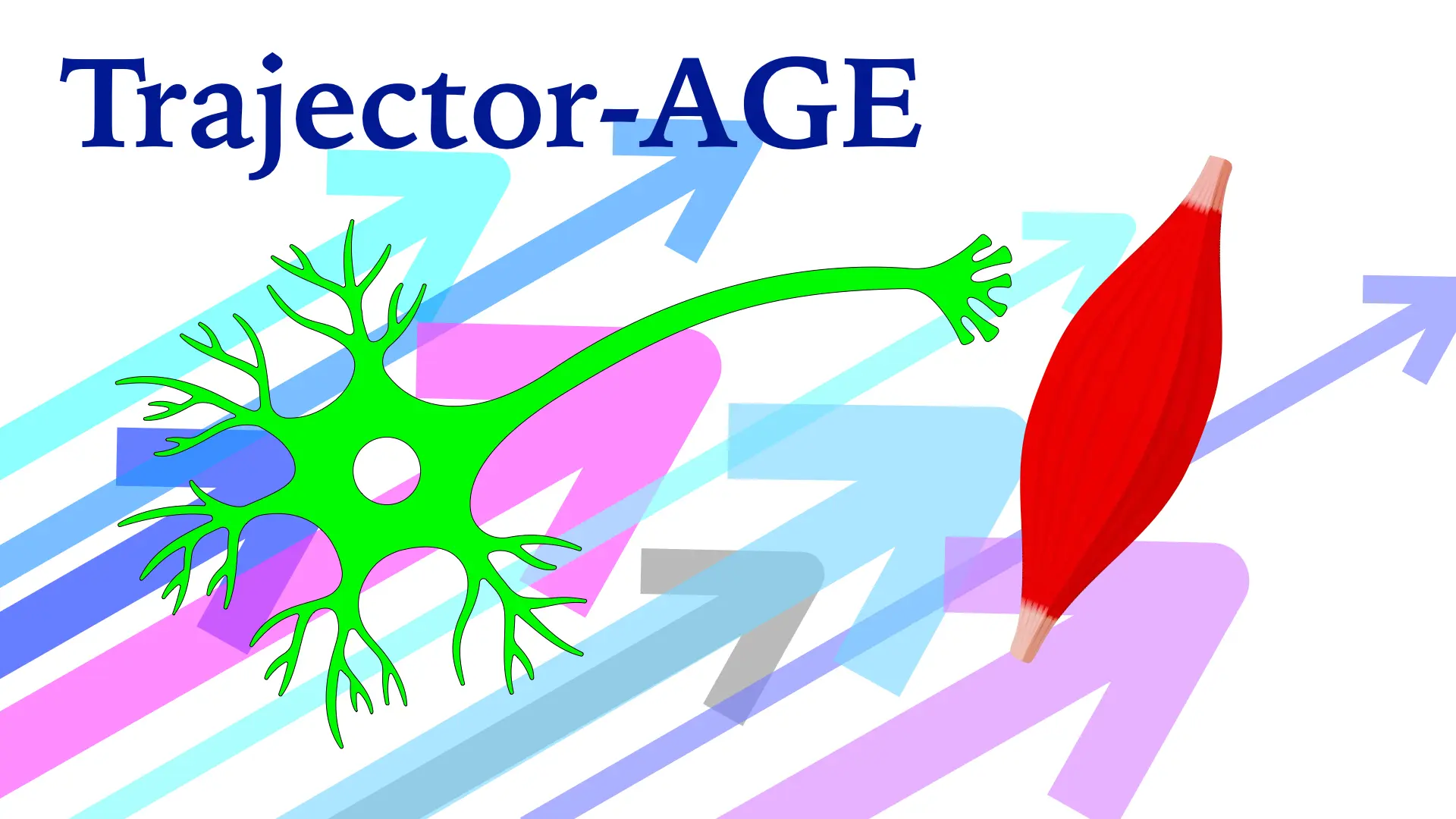Start
07/05/2022
End
06/05/2025
Status
Completed
PRIN 2020 - Trajector-AGE
Start
07/05/2022
End
06/05/2025
Status
Completed
PRIN 2020 - Trajector-AGE

Ageing is characterized by a decline in neuromuscular control and a progressive loss of muscle mass, strength and power, leading to reduced mobility, loss of independence, higher hospitalizations rate, and
increased all-cause mortality. Several studies suggest a non-linear decay of these age-related changes. Denervation-reinnervation processes, resulting in fewer but larger surviving motor units in advanced age,
start as early as age 50–60yr and can be magnified in older adults (>75yr). Significant functional consequences in daily living activities are not usually observed until approximately 50yr. However, after 50yr, muscle
strength/power reduction is accelerated and becomes faster than average muscle mass loss. Most observations come from cross-sectional studies and several confounding factors associated with secondary
aging, such as physical activity levels, may contribute to (or compensate for) the observed age-related reductions in neuromuscular function. Compared to cross-sectional designs, prospective ones are advantageous in
their ability to investigate fundamental mechanisms by excluding inter-subjects variability. In this project we will characterize longitudinal age-related changes in motor function, physical performance and muscle
aerobic metabolism with an integrated approach. We aim to combine classical methods of in-vivo and ex-vivo evaluation of neuromuscular function with innovative approaches for assessing changes and interactions
between neural, structural and metabolic variables in two critical phases of ageing: 55–60yrs and 75-80yrs. . We will describe the 2-yr time course of 1) mechanisms impairing neuromuscular function (denervation-reinnervation processes); 2) interactions between muscle structural changes and neural/metabolic impairments; 3) functional and metabolic changes occurring at whole muscle as well as single fibers level. The results will extend current understanding of physiological determinants of neuromuscular alterations in aging by identifying the course and rate of changes of specific factors that mediate functional loss and disability in older adults.
Exercise intolerance, defined as the incapacity to produce/maintain adequate muscle force or power to accomplish a task commensurate to the needs of everyday life, represents one of the clinical hallmarks of aging
as well as of many chronic diseases. Consequently, non-invasive methods and tools capable to objectively identify and quantify, the metabolic and functional impairments of the muscle oxidative metabolism
in healthy subjects and patients have become essential. More specifically, methods developed over the years with the aim to identify and evaluate basic physiological mechanisms, and traditionally applied for the
functional evaluation of sport performance, can be utilized, within a translational approach, to better identify the physiological origins of the metabolic impairments. Moreover, the noninvasiveness of these approaches
allows repeated measurements to be performed, allowing the quantification of progression over time. In this project, both submaximal and peak exercise responses will be evaluated through cardiopulmonary exercise
testing (CPET) providing assessment of the integrative responses of pulmonary, cardiovascular, and skeletal muscle systems.
Our group is responsible for the development of the optical innovative technologies for muscle oxidative metabolism determination. The techniques developed are: 1) time domain near infrared spectroscop y(TD NIRS) for determining the concentration of the muscular oxy-, deoxy- and total- hemoglobin and muscle oxygen saturation;2) Diffuse Correlation Spectroscopy (DCS), for the determination of muscle blood flow.
Publications
• Clinical Trial Registration: Longitudinal Neuromuscular and Metabolic Changes With Aging (TrajectorAGE), NCT06168591. https://www.clinicaltrials.gov/study/NCT06168591?cond=Longitudinal%20Neuromuscular%20and%20Metabolic%20Changes%20With%20Aging&rank=1
• Paper: "The Trajectories of Neuromuscular Aging (TRAJECTOR‐AGE Clinical Trial): Study Rationale and Methodological Protocol", Lauretani -et al., Journal of the American Geriatrics Society, 2025.
• ECBO2023: Poster. With Proceeding.
“Evaluation of muscle aging with TD NIRS and DCS”, M. Nabacino, C. Amendola, D. Contini, L. Spinelli, A. Torricelli, A. Pilotto, M. Ansaldo, S. Porcelli, F. Lauretani, A. Hoxha, M. Maggio, and R. Re, in Diffuse Optical Spectroscopy and Imaging IX, Technical Digest Series (Optica Publishing Group, 2023), paper 126282E.
• BIOMED2024: Poster. With Proceeding. “Comparison of Resting-State Hemodynamic Parameters of the Vastus Lateralis Muscle Measured with TD NIRS in Middle-Aged and Old Population”, M. Nabacino, C. Amendola, A. Pilotto, M. Ansaldo, M. Maggio, M. Salvi, D. Contini, L. Spinelli, A. Torricelli, F. Lauretani, and R. Re, in Optica Biophotonics Congress: Biomedical Optics 2024 (Translational, Microscopy, OCT, OTS, BRAIN), Technical Digest Series (Optica Publishing Group, 2024), paper JS4A.20.
• mNIRS2024: Poster presentation. “Changes in oxidative metabolism basal parameters in vastus lateralis for middle-aged and old populations in a 12 months period”, R. Re, C. Amendola, M. Nabacino, D. Contini, L. Spinelli, A. Pilotto, M. Ansaldo, F. Lauretani, M. Maggio, S. Porcelli and A. Torricelli.
• FISMAT23: Oral presentation
“TD-NIRS and DCS for the assessment of muscle aging”, M. Nabacino, C. Amendola, D. Contini, L. Spinelli, A. Torricelli, A. Pilotto, M. Ansaldo, S. Porcelli, F. Lauretani, A. Hoxha, M. Maggio and R. Re.
• ECCS2024: Oral presentation “Identifying hemodynamic differences during vascular occlusion test by time-domain near infrared spectroscopy in old trained and untrained population”, Nabacino M., Re R., Amendola C, Contini, L., Contini D., Spinelli L., Pilotto A., Alcazar J., Lauretani F., Franchi MV., Botter A., Porcelli S., Torricelli, A.
• ECBO2025: Oral. With Proceeding.
“Differences of Time-Domain NIRS-derived Hemodynamic Parameters of the Vastus Lateralis Muscle with Age and Physical Activity”, Marco Nabacino, Caterina Amendola, Letizia Contini, Davide Contini, Lorenzo Spinelli, Alessandro Torricelli, Andrea Pilotto, Fulvio Lauretani, Julian Alcazar, Simone Porcelli, and Rebecca Re.
• ISMuLT2025: Oral Invited: “Tecniche ottiche innovative per la caratterizzazione del muscolo: metabolismo ossidativo,composizione e funzione vascolare”, Re R.